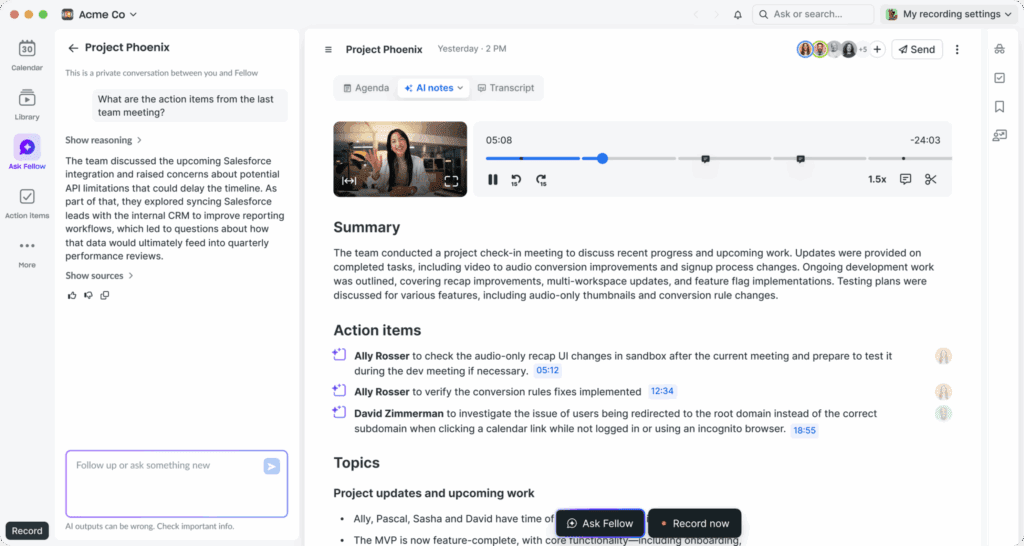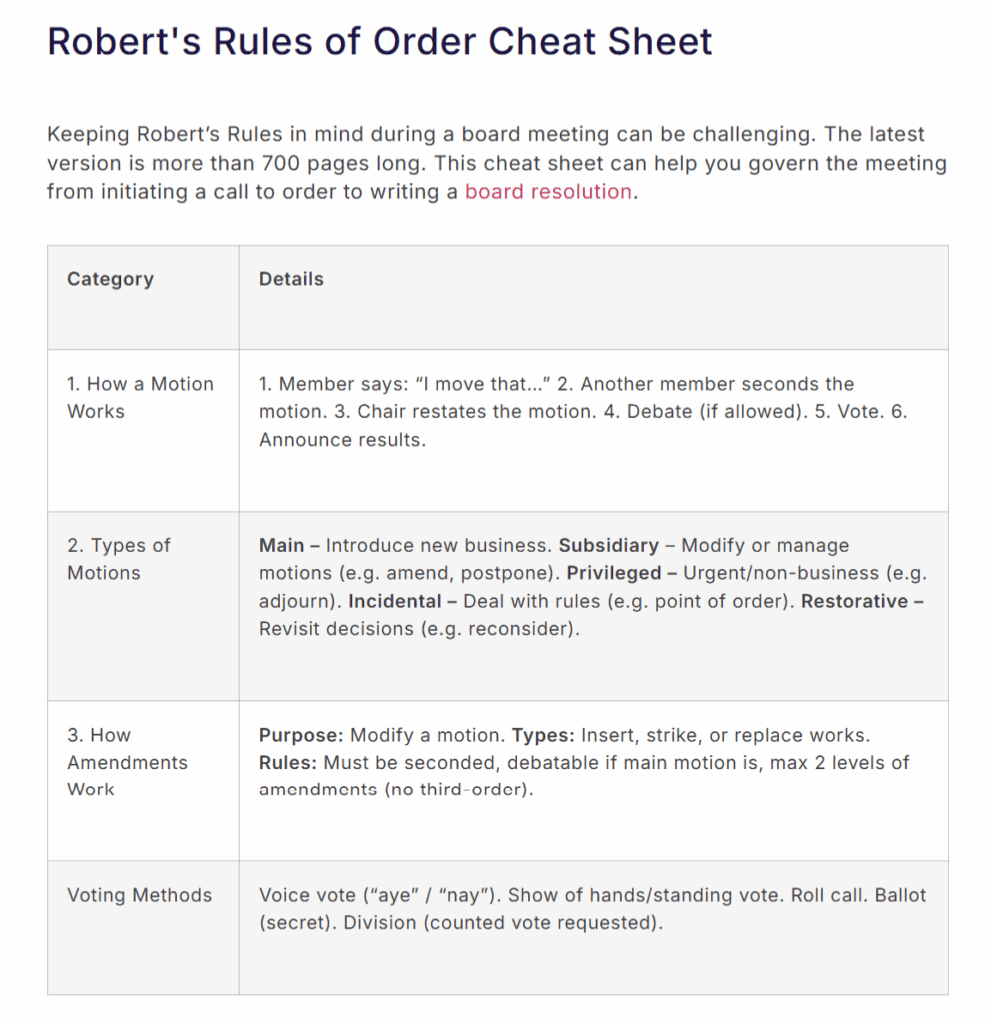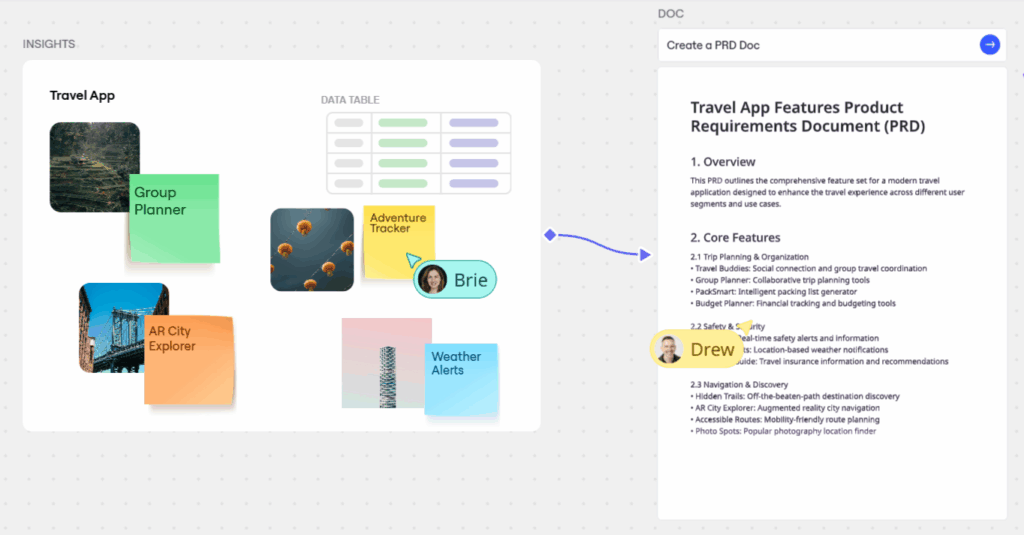Does this sound like an experience you’ve had recently?
You’re starting to lead a video call, but half the team is muted and the other half is blankly staring at their screens.
You ask a question, and nobody answers until you call their name. On top of that, post-meeting messages go unanswered for hours. The office buzz feels alive, but your remote workers seem distant. If this feels familiar, your hybrid team is struggling with engagement.
➜ This is important to recognize because disconnection lowers productivity, reduces employee satisfaction, and increases turnover.
Left unchecked, it can turn a strong team into a group of isolated individuals.
The good news is you can fix it.
Let’s explore why hybrid teams feel disconnected and some practical ways you can help rebuild connection fast.
Table of Contents
- The Real Reasons Hybrid Teams Feel Disconnected
- 6 Practical Ways to Reconnect Your Hybrid Team Fast
- The Long-Term Benefits of a Connected Hybrid Team
- Wrap Up
The Real Reasons Hybrid Teams Feel Disconnected
How your team communicates, bonds, and collaborates sets the tone for the working relationship. Without intentional effort, silos and gaps emerge that affect everyone.
Here are some of the top reasons hybrid teams are feeling so disconnected:
Lack of Casual Interaction
You know those watercooler chats where coworkers swap stories or ask quick questions? Remote workers miss out on those team norms.
In-person moments build trust and strengthen workplace culture. Without them, team bonds weaken.
*Pro-Tip: You can’t force casual interactions, but you can create spaces for them. Even short, fun virtual coffee breaks help. (More on this in a bit.)
Poor Communication Cadence
Hybrid teams often suffer from mismatched communication. Too many meetings or none at all. And channels like instant messaging or email aren’t always clearly defined.
(Imagine a remote worker sending an update on Google Drive, but the in-office staff never checks it. Or daily video conferencing that overlaps with other time zones, so some remote staff can’t attend.) Misaligned schedules lead to confusion and frustration.
Setting clear communication expectations is key. Decide when to use instant messaging, email, or video calls. And clearly define cadence for async updates so no one feels out of the loop.
Inequity Between In-Office and Remote Staff
In-office workers often get more facetime with managers. Promotions and decisions might seem biased toward employees who are physically present.
Same goes with idea-sharing and speaking up on important issues.
For example, an in-office worker might casually share an idea with a manager and get noticed. But a remote colleague might miss that chance. (Or they might send an idea via Slack or email, but it gets missed or deprioritized.)
This also affects empathy in the workplace, which is a growing concern.
According to an article by the Harvard Business Review, digital communication tools may lead to emotional distance without healthy norms in place.
To put this in perspective, if an in-person staff member shares that they are struggling with personal issues, their managers may show more compassion. But if that same update comes through a quick message on Slack or email, it might not land the same way.
Without tone, body language, or shared space, the emotional weight can get lost — and so can the human connection.
Collaboration Fatigue
Video call overload, meeting burnout, and constant notifications can lead to disengagement and frustration for hybrid teams. It can also bring down employee morale.
Instead of overly communicating, encourage short, focused meetings, and respect boundaries for async work. Be sure to also make room for fun interactions as well. These are great for boosting mood and bringing everyone together.
We’ll touch on this more below!
6 Practical Ways to Reconnect Your Hybrid Team Fast
Disconnection isn’t permanent. With intentional strategies, you can rebuild relationships and improve collaboration quickly. Try these practical tips…
1. Host Regular Virtual Team-Building Activities
Virtual teams benefit from structured social time. Schedule in quick, fun sessions like trivia, online games, or themed coffee breaks.
Outback offers virtual team-building activities designed for hybrid teams. Lean on these sessions to help build rapport and spark genuine conversations.
These are great for giving team members who rarely interact a chance to connect naturally.

2. Create a Clear Communication Playbook
Set clear norms for communication and tell hybrid workers where they can access your playbook.
Decide when to use email, instant messaging, or video calls. Define response expectations and communication cadence.
To help remote and in-person employees stay aligned after a group call, use meeting note-taking tools like Fellow. They automatically create a shared record of conversations that you can then forward via email or attach to your team communication channel.
Meeting recaps are also helpful for team members who weren’t able to attend your call.

3. Rotate Meeting Times for Inclusivity
Hybrid teams span time zones and schedules. Try rotating meeting times so both in-person and remote workers aren’t always joining late or missing key discussions.
And consider applying Robert’s Rules of Order principles in your virtual meetings:

Structured, democratic meetings give everyone a voice.
4. Encourage Short Daily Check-Ins
Host quick 10–15 minute check-in calls to help maintain team connection and alignment.
(Ask team members about their progress, current challenges, and if they need any specific support.)
Even simple Slack check-ins can help improve hybrid teamwork and foster accountability.
Slack has a watercooler channel you can use if you’d rather host a daily virtual chat instead of a video call.
5. Celebrate Wins Publicly
Recognition matters and keeps employee morale high.
Highlight employee achievements in team meetings, email updates, or messaging channels often.
Be sure to celebrate both in-office and remote contributions. Public acknowledgment reinforces employee engagement and motivates team members. A simple shoutout in Microsoft Teams or on Slack can make remote workers feel included and valued.
6. Invest in Connection-Focused Tools
Visual collaboration tools and virtual communication platforms help reduce silos. Google Drive, interactive whiteboards, and task management apps are great for keeping hybrid teams aligned.

*Pro-Tip: Prioritize tools that support both synchronous and asynchronous work. Visual collaboration can help reduce confusion and keep everyone engaged, regardless of location.
The Long-Term Benefits of a Connected Hybrid Team
Intentional reconnection and employee engagement have real benefits.
Teams that communicate well and bond regularly enjoy higher productivity. In fact, it’s estimated that $9.6 trillion in productivity would be added to the economy if the global workforce was fully engaged, according to Gallup.
And when employee satisfaction improves, turnover reduces.
Workplace culture also becomes stronger, which attracts top talent.🏅
Wrap Up
Hybrid teams feel disconnected for a mix of reasons, including: Missing casual interaction, poor communication cadence, inequity, and collaboration fatigue.
The fix isn’t complicated.
Host regular team-building activities, create communication playbooks, rotate meetings, encourage check-ins, celebrate wins, and invest in the right tools.
Small, intentional steps like these can help you rebuild team trust and collaboration.
Improve hybrid teamwork and strengthen your company culture with Outback’s virtual team-building activities to reconnect your team quickly. Your in-person and remote teams will thank you for it!
Author Bio
Mike Bandar is an award-winning UK-based entrepreneur. A Founding Partner of Turn Partners, the startup studio focused on the acquisition, turnaround, or creation of digital businesses. Through Turn Partners, Mike co-founded Hopper HQ, the Instagram planning and scheduling tool, working with thousands of influencers, brands and agencies around the world.



